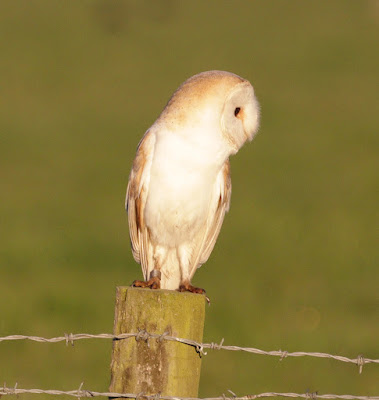I have to say, the weather has been more like April showers than flaming June. At last this morning, a spot of sunshine where I’d arranged to meet Andy to see if we could come up with a cunning plan to catch any of the Sand Martins nesting at the Cockerham cliff face.
There are huge numbers at the colony where we estimated 400+ individuals, most if not all of which appeared to be adults. This is now a huge colony that some 10/12 years ago began with just a couple of pairs breeding in a tiny face of exposed sand above a fishing pond.
Looking up at the nests, most of which are at 30/40ft high in soft strata of the dig we decided on a plan of action for the week after next. That will involve staying away from the nesting holes but catching the martins at lower feeding levels before the sun lights up the quarry face.
Sand Martin
Sand Martin colony
Andy was off to the hills to ring some Pied Flycatchers so I drove up to Conder Green. I stopped for a roadside Red-legged Partridge, a non-native partridge of the modern countryside. I have to say that despite their unwelcome status as an introduced species gone wild, the things are rather photogenic.
Red-legged Partridge
Red-legged Partridge
We are into the doldrums of June when migration is over and birds spend all their time and energy in actual breeding or breeding attempts. That much was clear at the pool with identical counts and similar action to a week ago. Counts were of 40 Swift, 18 House Martin, 15 Swallow and 2 Sand Martin hawking for early morning insects over the marsh and hedgerows.
On the pool - a pair of Oystercatchers with just one youngster plus at least three other pairs without young. 10 Redshank, 2 Avocet, 2 Shelduck, 4 Tufted Duck, 2 Lapwing, 3 Little Egret and 6 Common Tern. Four of the terns seem to be now resident, the others interlopers from the Lune Estuary 100 yards away.
Passerines were also reminiscent of last week with 4 Reed Buntings, 8 Sedge Warbler, 6 Whitethroats and 2 Reed Warbler in song, plus a number of young Skylarks and Pied Wagtails with adults close by.
Pied Wagtail
Skylark
Reed Bunting
In the “office” earlier in the week I’d watched a Dunnock circle around the wing mirror of a neighbour's car. It was raining, hence the fuzzy pictures.
Dunnock
Dunnock
Dunnock
Was the Dunnock hunting around the edge of the mirror for spiders which often disappear into the gaps of the movable glass, hide in the dark recess but give the game away with their webs decorating the surface? Or had the bird spotted another Dunnock in the mirror and being more than a little fired up by romance or territorial rights, decided to take a closer look? After three or four minutes of this behaviour it flew off into the garden.
There's heavy rain forecast for Friday. See you soon.
Linking today with Anni's Blog and https://viewingnaturewitheileen.blogspot.com.
Linking today with Anni's Blog and https://viewingnaturewitheileen.blogspot.com.


































































.jpg)












